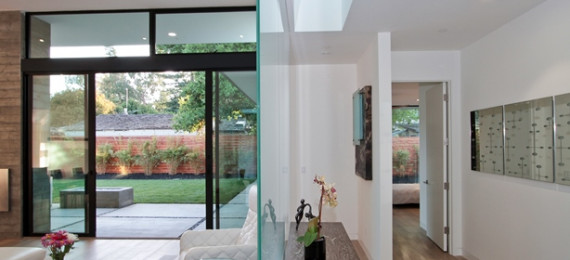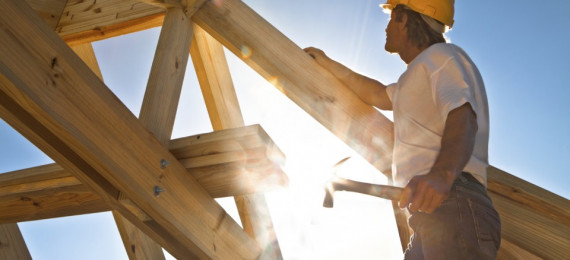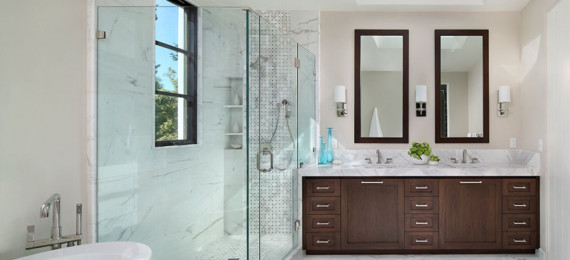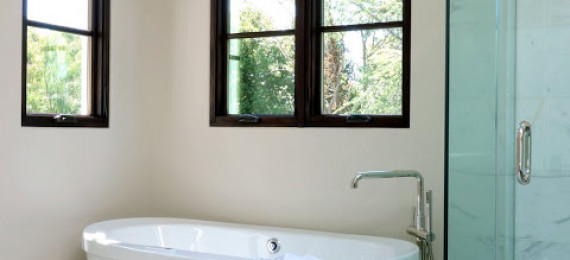These resources are from an archived version of our website. Want to see what we’ve been up to lately? Check out our new website.
Category: energy efficiency
Archives - Clarum Homes » Archive by category 'energy efficiency' (Page 5)
High Performance Homes: Passive-Certified vs. Passive-Inspired
Posted by Clarum Homes on August 21, 2013 | Categories: custom homes, energy efficiency, high performance homes, passive home | 1 Comment
If you’re planning to build a custom home or renovate your current abode, you have an amazing opportunity to transform the way you live. There are an incredible array of energy-efficient home systems available today, and if you’re planning a new custom home, you should think high-performance from the start. At present, there is no universal definition of a “high-performing home” in the construction industry. However, there is some consensus in the way the term is used. At Clarum, we believe high-performing homes incorporate the principles of passive home construction, including: Lighter...
Read More
Home Automation: The Future, At Your Fingertips
Posted by Clarum Homes on August 7, 2013 | Categories: custom homes, energy efficiency, high performance homes | No comment
Imagine being able to turn your household alarms on or off using nothing but your smart phone. Or being able to receive automatic alerts about problematic events like water leaks or unexpected access to your house, no matter where you are. How would your life, both inside and outside of your home, change? The fact is, capabilities that were once props for futuristic science fiction are available to the custom home builders of today. And if you’re thinking of building a custom home, you should be thinking high performance from the start. High performance homes lead the way in utilizing...
Read More
High-Performance Home Systems for Energy Efficiency
Posted by Clarum Homes on July 24, 2013 | Categories: custom homes, energy efficiency, high performance homes | No comment
With the incredible array of energy-efficient home systems available today, your custom home building or renovation project has the ability to transform the way you live. And if you’re planning a new custom home, you should think high-performance from the start. High-performance homes utilize the most advanced sustainable design and technology available today to realize immense energy and cost savings, prevent mold and mildew formation, promote exceptional indoor air quality, and ensure that you live in remarkable comfort. And a high-performance custom home only costs 5-10% more than...
Read More
Costs to Operate a High-Performance Home
Posted by Clarum Homes on July 10, 2013 | Categories: custom homes, energy efficiency, high performance homes, passive home | No comment
When you’re planning to build a new custom home, it’s easy to focus on your upfront expenses and costs of construction without thinking about your ongoing costs once the home is built. These operating costs of your home are equally important, and have huge effects on the lifetime return on your investment and on the health of the planet. Today, anyone planning a new custom home should think high-performance from the start. You have an incredible array of options including eco-friendly construction materials, solar electric power systems, energy efficient windows, and on-demand tankless...
Read More
Establishing a Custom Home Building Timeline (Part I)
Posted by Clarum Homes on June 13, 2013 | Categories: California home builder, custom homes, energy efficiency, high performance homes | 1 Comment
Planning a custom home: budget, design, permit One of the first steps to building a new house is establishing a comprehensive and accurate timeline for completion. And if you’re planning a new custom home, you should think high-performance from the start. With all of the new green, sustainable technology available, you have an incredible array of options for building a new home that will greatly reduce your energy and water use. Plus, high-performance homes are healthier, smarter for the environment, and a great long-term investment. A number of factors before and during construction...
Read More
Radiant Floors: Overkill in a Passive Home? (Part 2)
Posted by Clarum Homes on May 15, 2013 | Categories: California home builder, custom homes, energy efficiency, high performance homes | No comment
In part one of this post, we asked if radiant under-floor heat makes sense for a high-performance, passive home. (Read Part One here.) The Overheating Debate Executive editor of Environmental Building News, Alex Wilson’s opinion is clear: radiant floors don’t make sense for passive homes. Overheating is one of many concerns: In a home with a tight envelope and a very small heating load, even a small amount of heat can cause overheating, and the thermal mass in a radiant floor system increases the risk. This is particularly true in buildings with some level of passive solar gain – the radiant...
Read More
Radiant Floors: Overkill in a Passive Home? (Part 1)
Posted by Clarum Homes on May 1, 2013 | Categories: California home builder, custom homes, energy efficiency, high performance homes | No comment
Few other heating methods get people so excited as do radiant floors – and for good reason. The delight of going barefoot on a warm surface is hard to beat. Think of a warm hardwood deck on a chilly day... or a picnic on a sun-baked rock. Radiant floors bring the pleasure home, heating your floor directly, which then radiates warmth into the room for a thoroughly comfortable atmosphere. A fantastic idea. But in a passive house – one that’s super-insulated and highly efficient, such as the homes we build at Clarum – does the idea hold up to reality? Our Radiant Experiment Between...
Read More
The quality of the air you breathe may not often come to mind. But given the impact it has on your everyday, it’s hard to exaggerate its importance. Most homes are built from construction materials that steadily off-gas over their lifespan; these pollutants aren’t healthy or comfortable to breathe. Neither is air that’s heavy and stale. Ventilation addresses both problems; it also goes further: Removes unwanted smells (cooking, pets, etc.) Controls moisture, protecting your walls, floors and belongings Prevents mold and keeps pollutants from damaging your health Helps you focus;...
Read More
Adhesives and Caulks
Posted by Clarum Homes on March 4, 2013 | Categories: California home builder, custom homes, energy efficiency | No comment
Adhesives are everywhere. Cabinets and counters, sub-floors and carpets. Paints and stains. Bath tubs, moldings, baseboards... Each of these elements requires adhesive or caulk for installation. In fact, few other building materials are so common as adhesives. Yet most of the adhesives used in a conventional home are highly toxic. At Clarum we call that a problem. Invisible as the Air you Breathe Many adhesives use volatile emulsifiers to give them a liquid texture during application. After drying, these volatile organic compounds (VOCs) slowly evaporate at room temperature – bringing...
Read More
The Insulation Effect
Posted by Clarum Homes on January 23, 2013 | Categories: California home builder, custom homes, energy efficiency, high performance homes | No comment
What does insulation do? It maintains the living temperature you like best, of course! However, there’s more to it than that. What else does insulation accomplish? What are the passive design standards for insulation? And how does Clarum approach this? Allow us to give you a tour. What Insulation Does Insulation regulates temperature by preventing thermal bridging and unwanted air flow. Thermal bridging is when heat passes through solid objects, leaking in or out of your house. With a strong thermal resistance (R-value), insulation slows down the loss of heat. It also prevents drafts. Most...
Read More
















